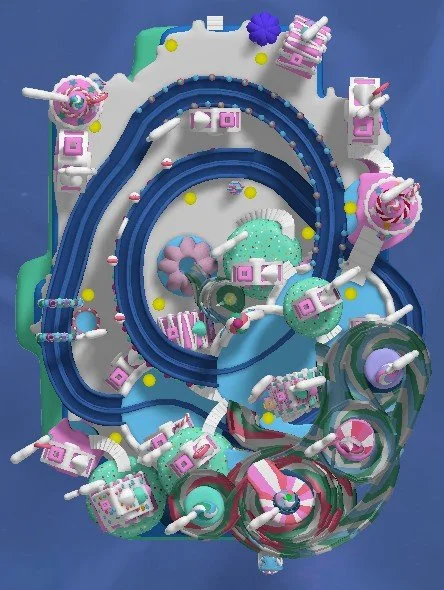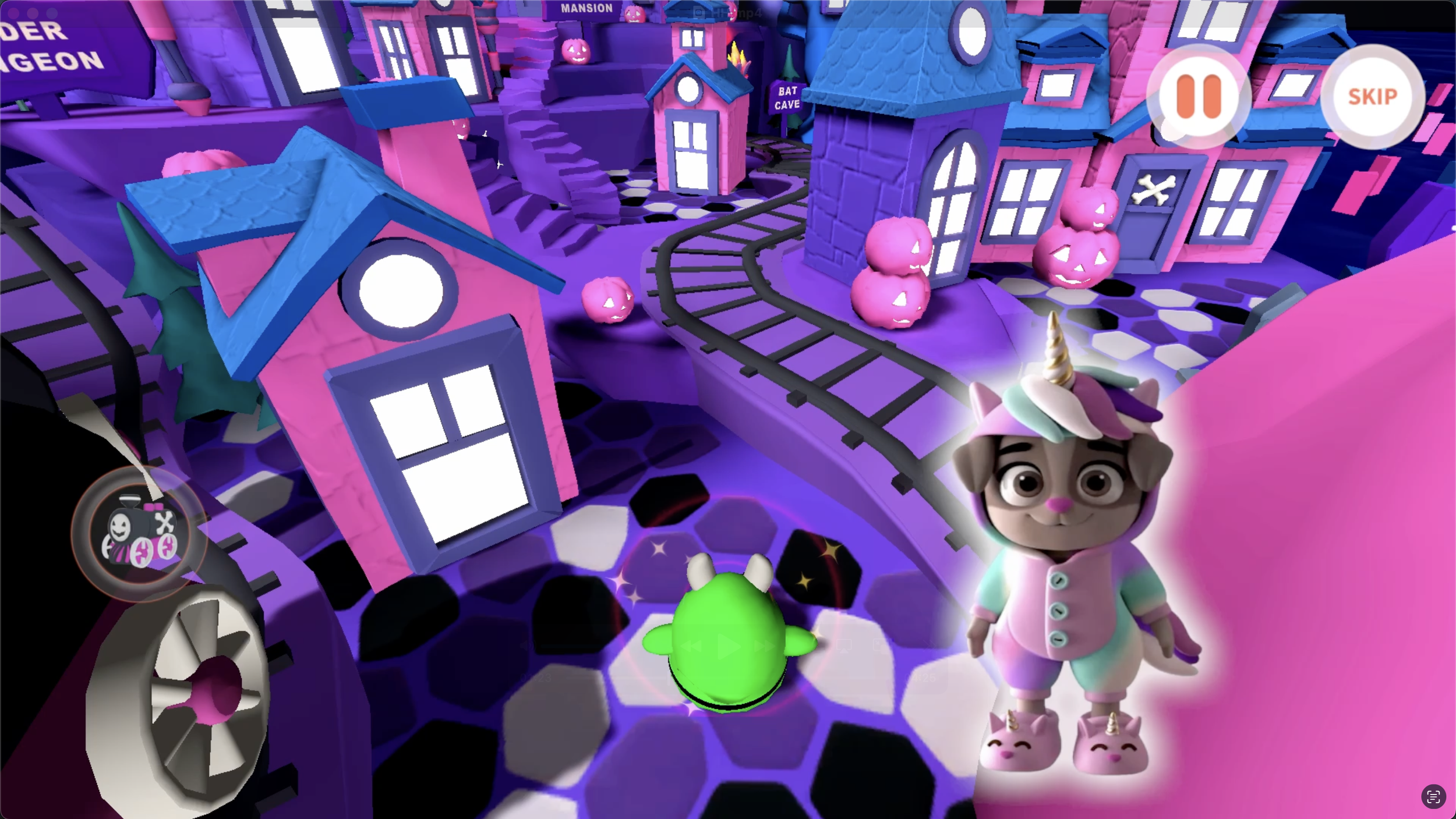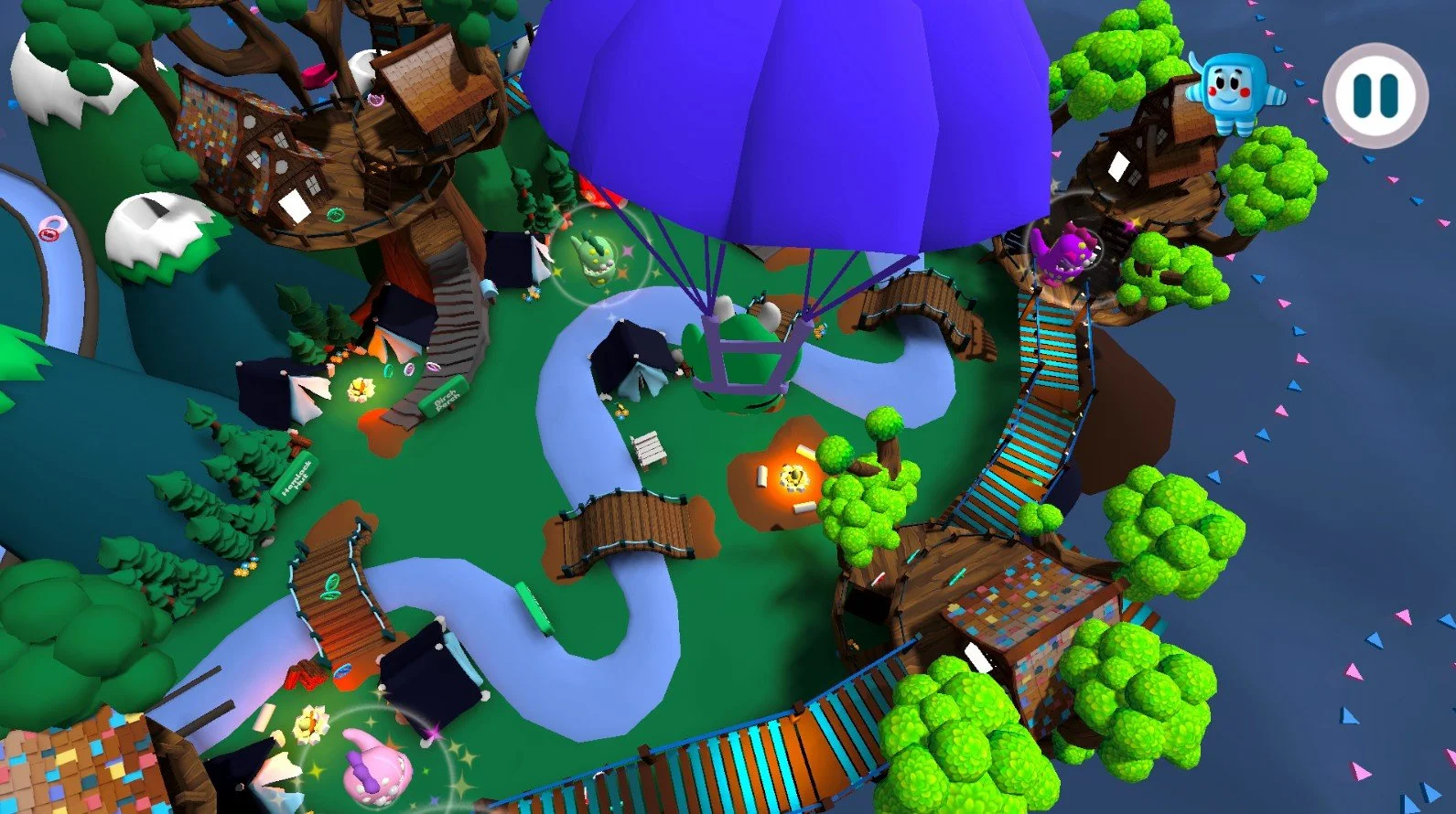LuvBug Learning: Villages
While at LuvBug Learning, I also contributed to a captivating collection of games known as Villages. Across the many games included in this collection, Candy Land stands out. This village includes vibrant characters and exciting activities. Players are challenged to reclaim the village by defeating invading enemies before venturing into an enchanting exploration. By hugging in-game friends and then answering prompts on social-emotional learning, players can enter a unique and exhilarating "extravaganza mode" and engage in thrilling rainbow-tunnel battles. As players roam the village, they have access to various modes of transportation, including trains, boats, and planes, adding depth and excitement to their adventurous journey.
Company: LuvBug Learning
Engine: Unity, C#
Three-person development team
Awards:
EDTECH Award
Cool Tool Finalist, Mom’s Choice Award
National Parenting Product Award
Shipped - Download app: App Store or Google Play Store
Roles and Responsibilities
Level designed Village environments in Unity with custom asset placement and terrain design.
Designed multi-modal player paths for walking, flying, boat, and train gameplay.
Used greyboxing and iteration to refine flow, pacing, and environmental storytelling.
Coded all core mechanics in C#, including collectibles, transitions, and enemy interactions.
Created finite state machines for seamless transitions between gameplay modes.
Built custom camera systems with Cinemachine for each gameplay mode.
Optimized assets, lighting, and systems for runtime efficiency and scalability.
Parti Diagram of Main Structures
Final Level with Art Top Down View
Level Design Process
Greyboxing & Structural Planning
Began each village by greyboxing major terrain, traversal paths, and activity zones to define spatial flow and player routes.
Focused early iterations on scale, navigation clarity, and pacing, ensuring each village felt distinct but cohesive within the larger world.
Used elevation, sightlines, and movement metrics to shape exploration rhythm and transition points between gameplay states.
Gameplay Pathing & Traversal Flow
Designed movement paths for multiple traversal methods: walking, boating, and racing.
Tuned terrain, track shapes, and boat paths to maintain smooth transitions and avoid backtracking or dead ends.
Iteration & Playtesting
Continuously tested each village to refine pathing, discoverability, and mechanical clarity.
Collected user feedback to adjust pacing, reposition collectibles, and ensure each activity felt rewarding and intuitive.
Iterated on spatial density and landmark placement to reduce navigation friction and support smooth onboarding.
Problem Solving
The early phase of Candy Land focused on greyboxing to establish player movement, environment flow, and multi-modal transitions (walking, flying, boat-riding, and train-riding). Each system was tested using blockouts to evaluate movement metrics like jump arcs, acceleration, and camera bounds and to prototype the rhythm of exploration across a large village layout.
As gameplay goals became clearer, several spatial and visual design problems surfaced that required targeted iteration. For instance, some decorative houses cluttered key navigation paths, making it harder for players to react when chasing fast-moving jellybeans. These were strategically removed to improve visibility, reduce collision risk, and open up smoother traversal routes.
Jellybean spawn points themselves became a powerful design tool for guiding exploration. Originally clustered in familiar paths, many were relocated to encourage branching into underused spaces or vertical segments of the map. This required fine-tuning both the collectibles’ timing and placement to ensure they rewarded curiosity without stranding players or breaking flow.
Another challenge was clarity around boat lanes. Initial paths offered little reaction time, with players missing their cue to turn or transition. To fix this, the navigable water lanes were widened and subtly re-angled to give players more time to recognize upcoming turns and landmarks, enhancing both responsiveness and spatial understanding.
These iterative improvements, driven by observation and playtesting, helped turn a complex, multi-route level into an accessible and rewarding space, supporting freeform movement while reinforcing pacing, player discovery, and collectible-driven engagement.




